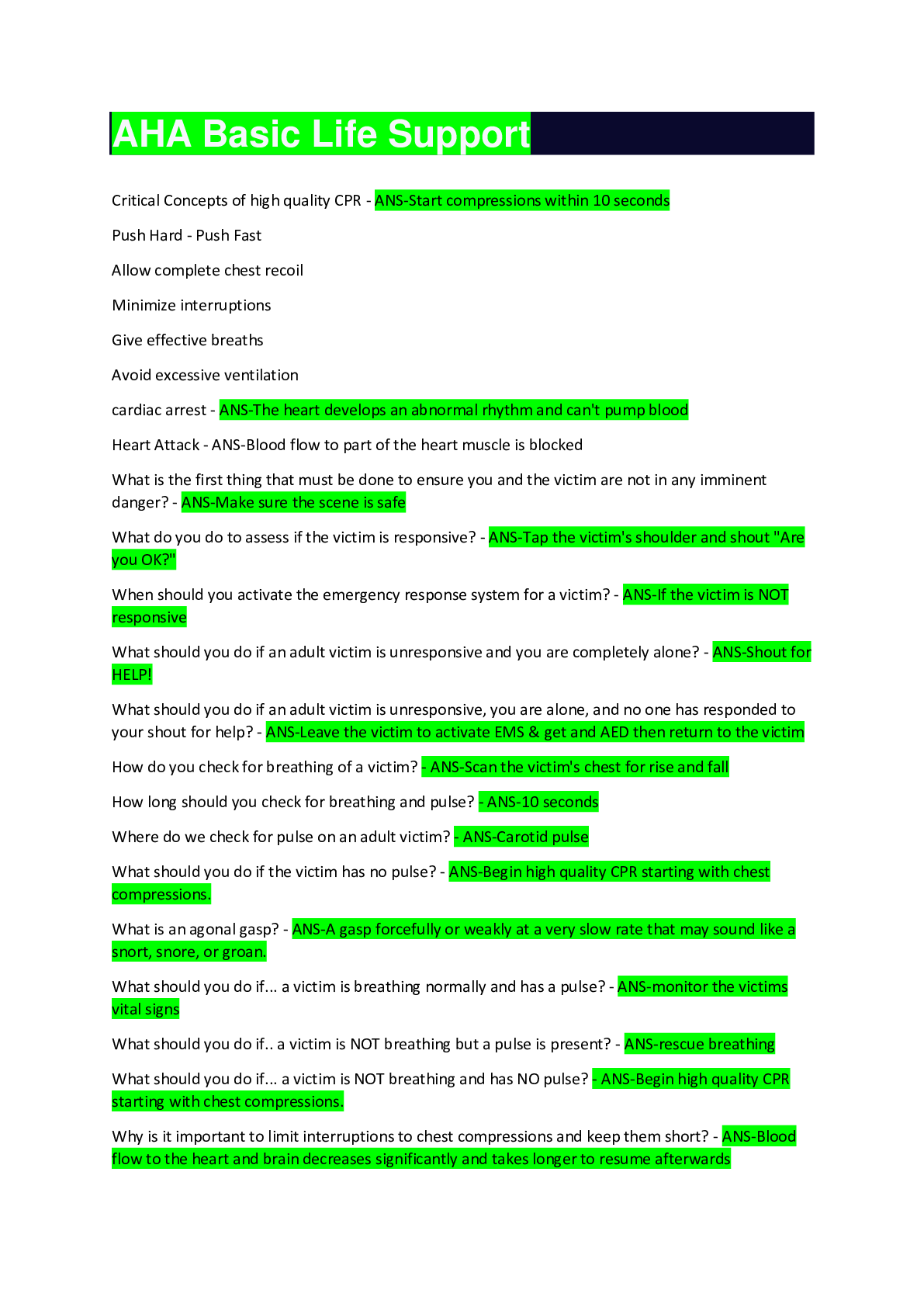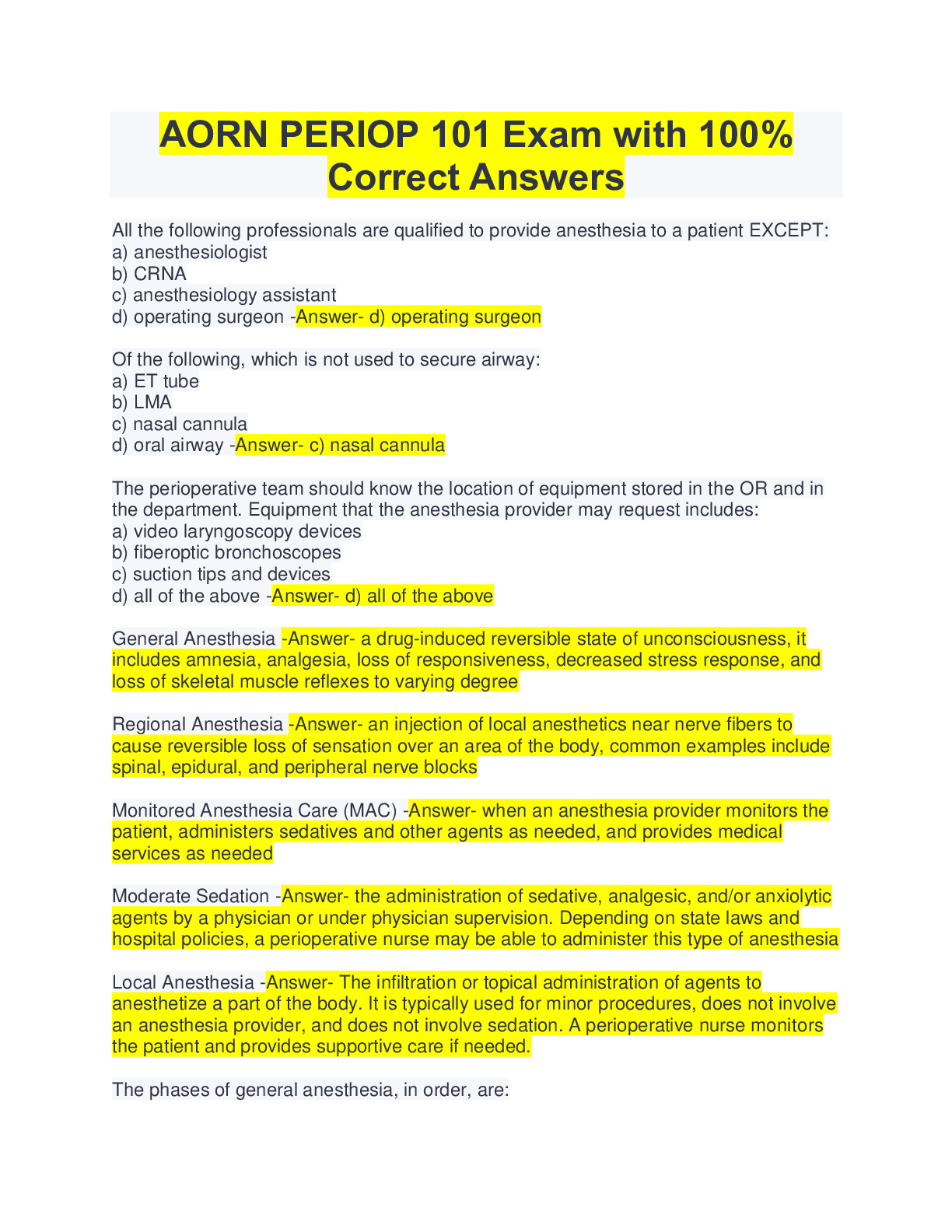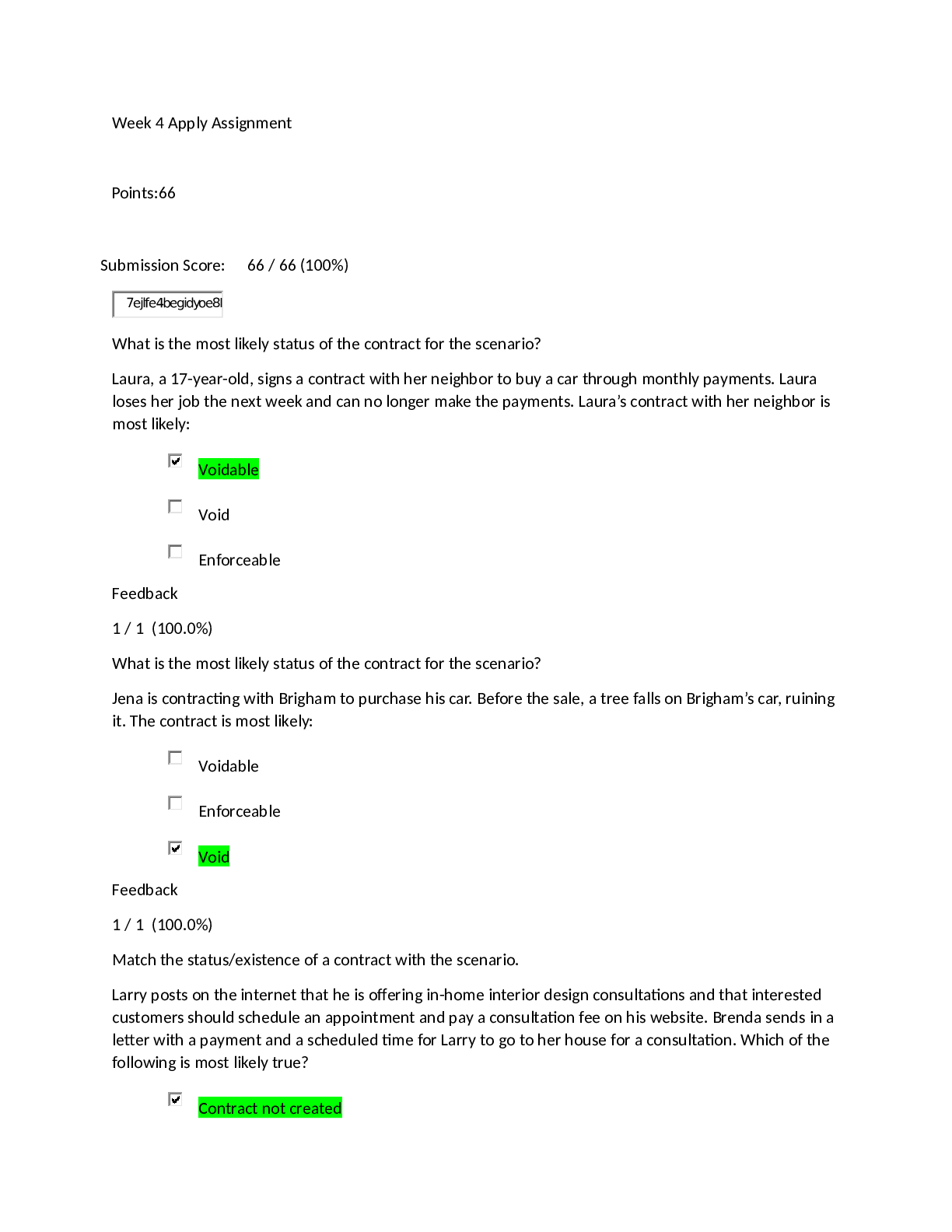Health Care > EXAM > AHA Basic Life Support.CORRECT ANS100% (All)
AHA Basic Life Support.CORRECT ANS100%
Document Content and Description Below
Critical Concepts of high quality CPR - ANS-Start compressions within 10 seconds Push Hard - Push Fast Allow complete chest recoil Minimize interruptions Give effective breaths Avoid excessive ve... ntilation cardiac arrest - ANS-The heart develops an abnormal rhythm and can't pump blood Heart Attack - ANS-Blood flow to part of the heart muscle is blocked What is the first thing that must be done to ensure you and the victim are not in any imminent danger? - ANS-Make sure the scene is safe What do you do to assess if the victim is responsive? - ANS-Tap the victim's shoulder and shout "Are you OK?" When should you activate the emergency response system for a victim? - ANS-If the victim is NOT responsive What should you do if an adult victim is unresponsive and you are completely alone? - ANS-Shout for HELP! What should you do if an adult victim is unresponsive, you are alone, and no one has responded to your shout for help? - ANS-Leave the victim to activate EMS & get and AED then return to the victim How do you check for breathing of a victim? - ANS-Scan the victim's chest for rise and fall How long should you check for breathing and pulse? - ANS-10 seconds Where do we check for pulse on an adult victim? - ANS-Carotid pulse What should you do if the victim has no pulse? - ANS-Begin high quality CPR starting with chest compressions. What is an agonal gasp? - ANS-A gasp forcefully or weakly at a very slow rate that may sound like a snort, snore, or groan. What should you do if... a victim is breathing normally and has a pulse? - ANS-monitor the victims vital signs What should you do if.. a victim is NOT breathing but a pulse is present? - ANS-rescue breathing What should you do if... a victim is NOT breathing and has NO pulse? - ANS-Begin high quality CPR starting with chest compressions. Why is it important to limit interruptions to chest compressions and keep them short? - ANS-Blood flow to the heart and brain decreases significantly and takes longer to resume afterwards What is the rate at which chest compressions should be done? - ANS-100-120 compressions per minute How deep should each chest compression be? - ANS-At least 2 inches (5 cm) What should be allowed to happen after each compression? - ANS-The chest should completely recoil (expand) Where is the heel of the hand placed on the chest to perform compression's? - ANS-Center of the chest on the lower half of the breastbone [Show More]
Last updated: 2 years ago
Preview 1 out of 11 pages

Buy this document to get the full access instantly
Instant Download Access after purchase
Buy NowInstant download
We Accept:

Reviews( 0 )
$7.00
Can't find what you want? Try our AI powered Search
Document information
Connected school, study & course
About the document
Uploaded On
Aug 24, 2022
Number of pages
11
Written in
Additional information
This document has been written for:
Uploaded
Aug 24, 2022
Downloads
0
Views
321









.png)



